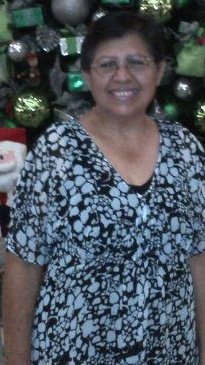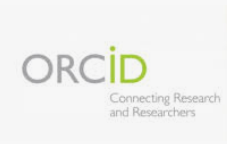Teaching-Learning Human Anatomy in the context of the teacher/student numerical relationship
Keywords:
teaching strategies and techniques, learning strategies and techniques, teacher/student numerical relationship.Abstract
Introduction: the work exposes the pedagogical mechanisms applied in the teaching-learning process of the chair of Human Anatomy. The applied didactic strategies and techniques were identified in the context of the theoretical and practical components of the subject, within the teacher/student numerical relationship.Objective: to appraise the teacher/student numerical relationship in teaching/learning Human Anatomy
Materials and Methods: the sample was formed by 296 pre-grade students of Medicine and 15 teachers of the department of Morphologic Sciences (Human Anatomy). Data were given in percentages represented in bar graphs.
Results: the teaching strategies used were objectives (72.89 %) and a guidebook (100 %). The predominating teaching technique in the theoretical component was the master lecture (59.98 %). The group technique under supervision (100 %) was used in the practical component. In the theoretic and practical components of the learning strategy, the recirculation of the information was used (48.47 %), related with the techniques of taking notes down and reviewing with oral repetition. The numerical relation teacher/student was: School A- 1/11; School B- 1/44; School C 1/34.
Conclusions: the didactic strategies and techniques within the numerical relationship teacher/student are static and representative of a mass education.
Palabras claves: estrategias y técnicas de enseñanza, estrategias y técnicas de aprendizaje, relación numérica docente /estudiante.
Downloads
References
2. Díaz Barriga F, Hernández Rojas G. Estrategias docentes para un aprendizaje significativo. Una interpretación constructivista. 2ª ed. México: Mc Graw Hill; 2002.
3. Misión institucional de las universidades A, B, C. de El Salvador. [Internet].2015 [acceso 4 jul2016]. Disponibles en:
http://www.ujmd.edu.sv/la-universidad/instituci%C3%B3n/misi%C3%B3n-y-visi%C3%B3n.
http://www.uees.edu.sv/mision_vision.php
http://secretariageneral.ues.edu.sv/index.php?option=com_content
4. Universidad Evangélica de El Salvador. Manual de Anatomía Humana. San Salvador: Facultad de Medicina, Departamento de Ciencias Morfológicas, Universidad Evangélica de El Salvador; 2015.
5. Mota MF, Mata FR, Ferreira A, Tales A. Constructivist Pedagogic method used in the teaching of human anatomy. Int J Morphol [Internet]. 2010 [Acceso 12 Nov 2013]; 28(2):369-374. Disponible en:
http://www.dx.doi.org/10.4067/S0717-95022010000200005
6. Rivera Michelena NM, Pernas Gómez M, Nogueiras Sotolongo M. Un sistema de habilidades para la carrera de Medicina, su relación con las competencias profesionales. Una mirada actualizada. Educ Méd Sup [revista en Internet]. 2016 [Acceso 2017 Jun 5]; 31(1): 0. Disponible en: http://ems.sld.cu/index.php/ems/article/view/856
7. Ion G, Silva P, Cano García E. El feedback y el feedforward en la evaluación de las competencias de estudiantes universitarios. Universidad Autónoma de Barcelona, España. Profesorado. Rev de Curríc y formac del profesorado [Internet].2013 [Acceso 19 ago2015]; 17(2):283-300.Disponible en: http://www.redalyc.org/articulo.oa?id=56729526017
8. Algieri RD, Mazzoglio y Nabar MJ, Castro Barros FA. Espacios Virtuales de Enseñanza y Aprendizaje (EVEA) en Esplacnología: Especificidades Pedagógicas en su Enseñanza Topográfica. Int J Morphol [Internet]. 2012 [Acceso 3 Abr 2013]; 30(3): 908-915. Disponible en: http://www.scielo.cl/scielo.php?script=sci_arttext&pid=S0717-95022012000300024&lng=es. http://dx.doi.org/10.4067/S0717-95022012000300024.
9. Sharma N. Teaching of Human Anatomy: The Indian perspective. Missing the woods for the trees? Bharatividyapeeth deemed university dental college, Pune, India. Rev Arg de Anat clin [Internet].2014 [Acceso 23 dic 2013]; 6(1):6-8.Disponible en: http://www.Connection.ebscohost.com/…/teaching-human-anato…
10. Pellon Arcaya M, Masilla Sepúlveda J, San Martin Cantero D. Importancia de la Sabiduría didáctica práctica como fuente de conocimiento base para la enseñanza de la Anatomía. Int J Morphol [internet]. 2010 [Acceso 14 de abr 2016]; 28(1):219-226. Disponible en:TIE_e_Portafolio.pdf?sequence=1 http://www.scielo.cl/scielo.php?script=sci_arttext&pid=S0717-95022010000100032&lng=es&nrm=iso.
11. Susacasa S. Pedagogía Médica: Soporte de la Formación docente específica para la enseñanza de las Ciencias de la salud. [Internet]. [Tesis para optar al grado de maestría en Pedagogía médica]. La Plata: Facultad de Ciencias médicas, Universidad Nacional de la Plata, Argentina; 2013. [Acceso 2 may2016]. Disponible en
http://www.postgradofcm.edu.ar/ProducciónCientifica/Tesis doctorales/37.pdf
12. Achiong Alemañy M, González Doblado L, Domínguez Cabrera M,
Martínez Pérez H, Acosta Montes de Oca M, Estrada Vaillant A. Derivación de objetivos formativos en la disciplina Morfo fisiología en el desarrollo de habilidades intelectuales. Rev medic electron [Internet]. 2016 [Acceso 26 de jul 2016]; 38(4):617-627.Disponible en: http://www.revmedicaelectronica.sld.cu/index.php/rme/article/view/1737/pdf_148
13. Wong Orfila T, Gutiérrez Maydata A. Ética en la enseñanza de la anatomía humana: del cadáver a la realidad virtual. Rev.edumecentro
[Internet].2013[Acceso 2017 Jun 7]; 1(1):8.Disponible en: http://www.revedumecentro.sld.cu/index.php/edumc/article/view/16
14. Arias Coello A. Creación y Mejora de la calidad docente. Creación de Recursos audiovisuales. Aplicación a los Fondos artísticos y científicos del Museo de anatomía Profesor Javier Puerta Fonolla. Univ Complut [Internet].2015 [Acceso 9 may2013];pry 78:2-11.
Disponible en:http://www. eprints.ucm.es/29373/
15. Lopez Nuila CR .Situación de la Educación Superior en El Salvador. Inno Educ [Internet]. 2011 [Acceso 19 dic 2014]; 11(57): 113-121.Disponible en:
http://www.CRL Nuila - Innovación Educativa, 2011 - redalyc.org
16. Gonzalez LA. Modelo educativo e incidencia sobre la educación superior. Contrapunto, periódico digital. (El Salvador, C.A.) 14 de Junio de 2017; 1. Disponible en:
http://www.contrapunto.com.sv/archivo2016/columnistas/modelo-educativo-e-incidencia-sobre-la-educacion-superior
17. Juárez de Amaya CG. Doctorado en Medicina, ciclo II-2007. Estudiantes en 2° y 3° matricula. Aprobación y reprobación: Informe. San Salvador: Facultad de Medicina, Universidad Evangélica de El Salvador; 2008.
Published
How to Cite
Issue
Section
License
All content published in this journal is Open Access, distributed under the terms of the CC BY-NC 4.0 License.
It allows:
- Copy and redistribute published material in any medium or format.
- Adapt the content.
This will be done under the following terms:
- Attribute the authors' credits and indicate whether changes were made, in which case it must be in a reasonable way.
- Non-commercial use.
- Recognize the journal where it is published.
The copyrights of each article are maintained, without restrictions.






